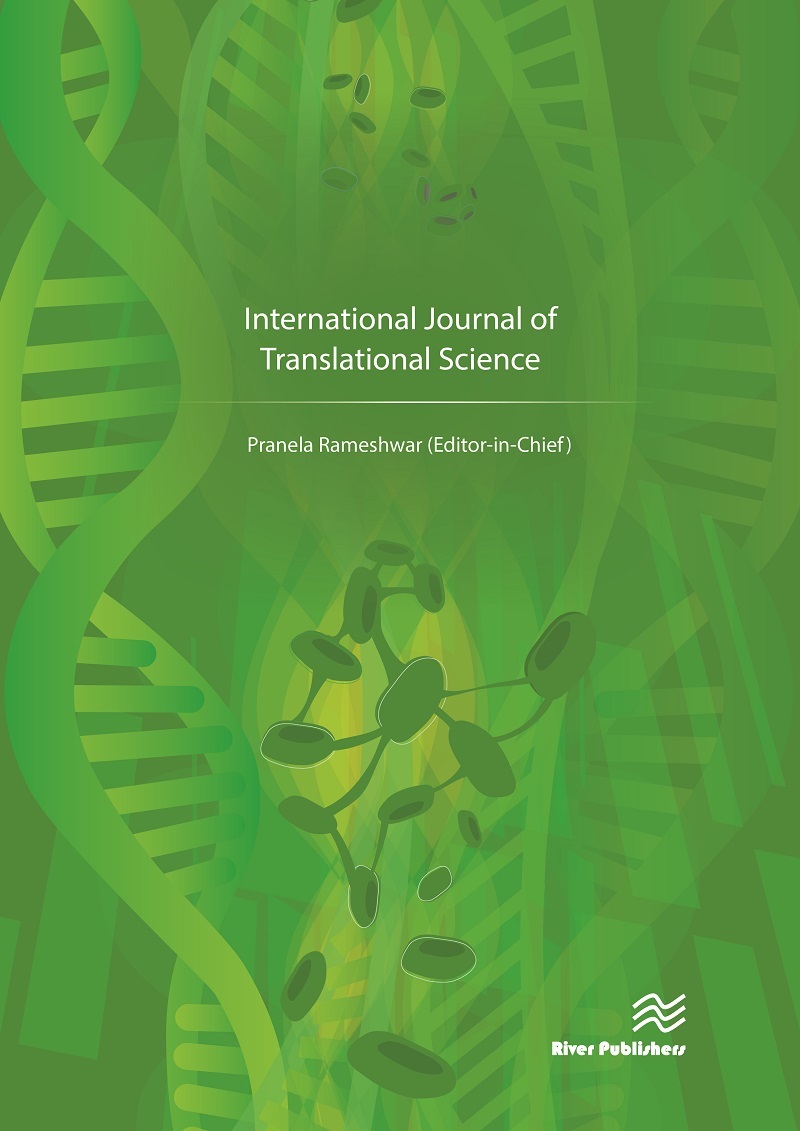Characterization of Mesenchymal Stem Cells from Human Cortical Bone
DOI:
https://doi.org/10.13052/ijts2246-8765.2016.005Keywords:
Mesenchymal stem cells (MSC), Human MSCAbstract
Background Context: Mesenchymal stem cells (MSC) are being used for spine and orthopaedic surgical and research applications. Bone marrow and fat are the most commonly used sources of these cells.
Purpose: To describe a new technique allowing the isolation and expansion of human MSC from cortical bone.
Study Design: MSC from human cortical bone (vertebral lamina) were isolated, expanded, and verified in vitro.
Methods: Human MSC were isolated from laminar bone obtained during surgery (decompression/laminectomy). They were then cultured and assessed using fluorescence-activated cell sorting techniques for MSC markers, colony-forming unit assays, and multilineage differentiation.
Results: Isolated and cultured cells demonstrated MSC markers and trilineage differentiation confirming their stemness.
Conclusion: A novel method for the isolation of MSC from cortical bone has been described. These cells have significant current and future application in spine and orthopaedic surgery; and both the source of the cells and particular characteristics of the cortical bone derived MSC have advantages over currently used MSC obtained from other sources.
Downloads
References
Yu, D. A., J. Han, and B. S. Kim, Stimulation of Chondrogenic Differentiation of Mesenchymal Stem Cells. 2012. Int. J. Stem Cells 5: 16–22.
Scott, M. A., et al. 2011. Current methods of adipogenic differentiation of mesenchymal stem cells. Stem Cells Dev. 20: 1793–1804.
Maxson, S., et al. 2012. Concise review: role of mesenchymal stem cells in wound repair. Stem Cells Translat. Med. 1: 142–149.
Cashman, T. J., V. Gouon-Evans, and K. D. Costa. 2013. Mesenchymal stem cells for cardiac therapy: practical challenges and potential mechanisms. Stem Cell Rev. 9: 254–265.
Ringe, J., et al. 2008. Human mastoid periosteum-derived stem cells: promising candidates for skeletal tissue engineering. J. Tissue Eng. Regen. Med. 2: 136–146.
Lyahyai, J., et al. 2012. Isolation and characterization of ovine mesenchymal stem cells derived from peripheral blood. BMC Vet. Res. 8: 169.
Reynolds, J. A., et al. 2013. Improving cardiovascular outcomes in rheumatic diseases: therapeutic potential of circulating endothelial progenitor cells. Pharmacol. Therapeut.
Gullo, F. and C. De Bari. 2013. Prospective purification of a subpopulation of human synovial mesenchymal stem cells with enhanced chondro-osteogenic potency. Rheumatology 52: 1758–1768.
Mendez-Ferrer, S., et al. 2010. Mesenchymal and haematopoietic stem cells form a unique bone marrow niche. Nature 466: 829–834.
Hicok, K. C., et al. 2004. Human adipose-derived adult stem cells produce osteoid in vivo. Tissue Eng. 10: 371–380.
Fernandez-Moure, J. S., et al. 2015. Enhanced osteogenic potential of mesenchymal stem cells from cortical bone: a comparative analysis. Stem Cell Res. Ther. 6: 203.
Zhu, H., et al. 2010. A protocol for isolation and culture of mesenchymal stem cells from mouse compact bone. Nat. Protoc. 5: 550–560.
Dominici, M., et al. 2006. Minimal criteria for defining multipotent mesenchymal stromal cells. The International Society for Cellular Therapy position statement. Cytotherapy 8: 315–317.
Corradetti, B., et al. 2013. Mesenchymal stem cells from amnion and amniotic fluid in the bovine. Reproduction 145: 391–400.
Lange-Consiglio, A., et al. 2012. Characterization and potential applications of progenitor-like cells isolated from horse amniotic membrane. J. Tissue Eng. Regen. Med. 6: 622–635.
Lovati, A. B., et al. 2001. Characterization and differentiation of equine tendon-derived progenitor cells. J. Biol. Regul. Homeostat. Agents 25: S75–S84.



